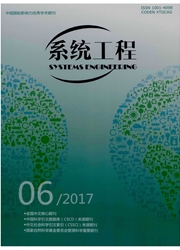

 中文摘要:
中文摘要:
为了从产业结构调整角度对陕西省碳减排政策设计提供决策依据,选择能源消费、生产链、消费需求视角,基于2007和2012年投入产出表,采用IPCC碳排放核算方法和EIO-LCA模型分别测算陕西省2007和2012年30个细分部门的直接碳排放和间接碳排放,构建碳减排效应模型分析各细分部门的2007和2012年的碳减排变化。结果表明,直接碳排放中,电力、热力的生产和供应业,石油加工、炼焦及核燃料加工业,煤炭开采和洗选业等基础性能源部门的碳排放量较高;间接碳排放中,建筑业、其他服务业隐含碳排放量较高,而“流出”间接碳排放对最终需求引起的碳排放贡献最大;在碳减排政策设计中,上述部门应该成为碳减排的重点领域。
 英文摘要:
英文摘要:
In order to provide decision-making basis for the carbon reduction policy design in Shaanxi province from the perspective of industrial structure adjustment, this paper chose energy consumption, production chain and consumer demand as perspectives, and used the IPCC carbon accounting methods and EIO-LCA model to estimate the direct carbon emissions and indirect carbon emissions of 30 segment departments respectively in Shaanxi province during 2007 and 2012 on the basis of the input-output table in 2007 and 2012. Finally, this paper creates carbon reduction effect model to analyze the carbon emissions changes of each department during 2007 and 2012. The results show that on the view of direct emissions, the carbon emissions of basic energy sectors such as electric power industry, petrochemical industry, coal mining and washing industry are higher; On the view of indirect carbon emissions, the carbon emissions of construction industry and other services are higher, and the "flow" indirect emissions caused the largest contribution to the carbon emissions on final demand. On the design of carbon emission reduction policy, these departments should be the key areas of carbon abatement
 同期刊论文项目
同期刊论文项目
 同项目期刊论文
同项目期刊论文
 期刊信息
期刊信息
